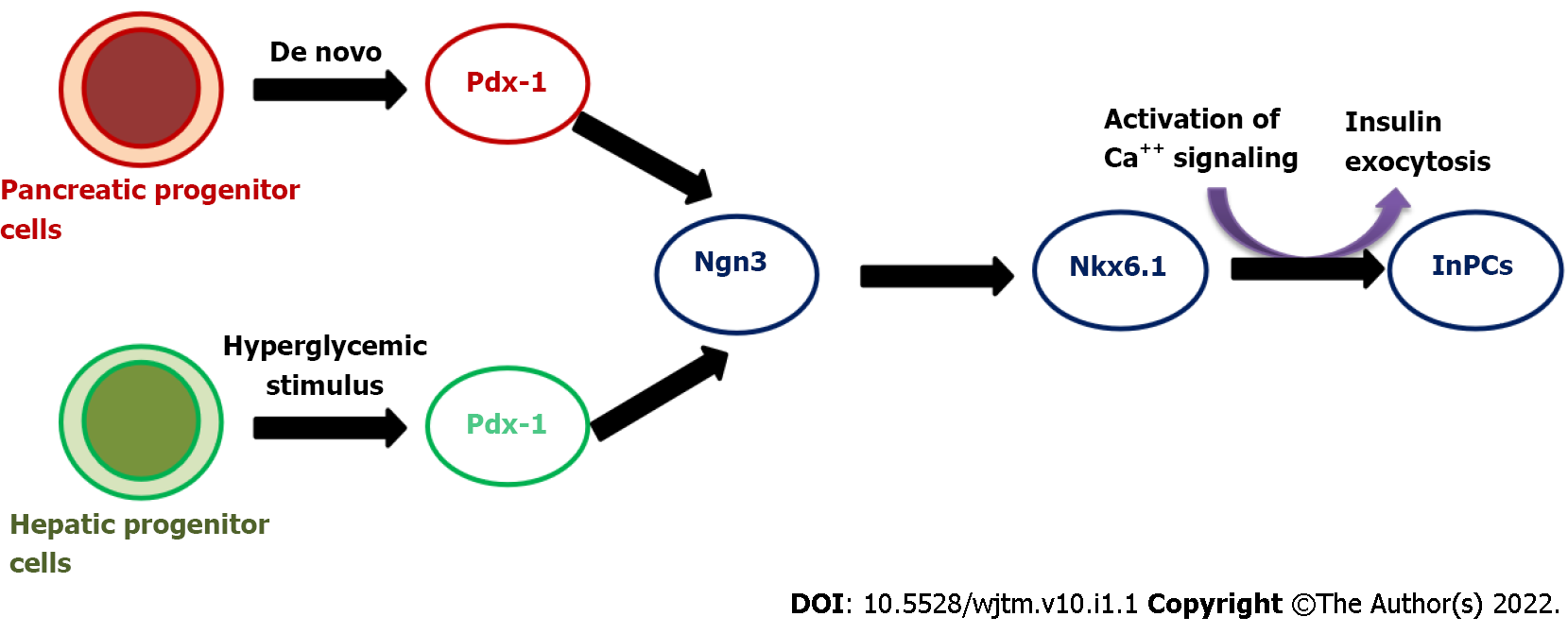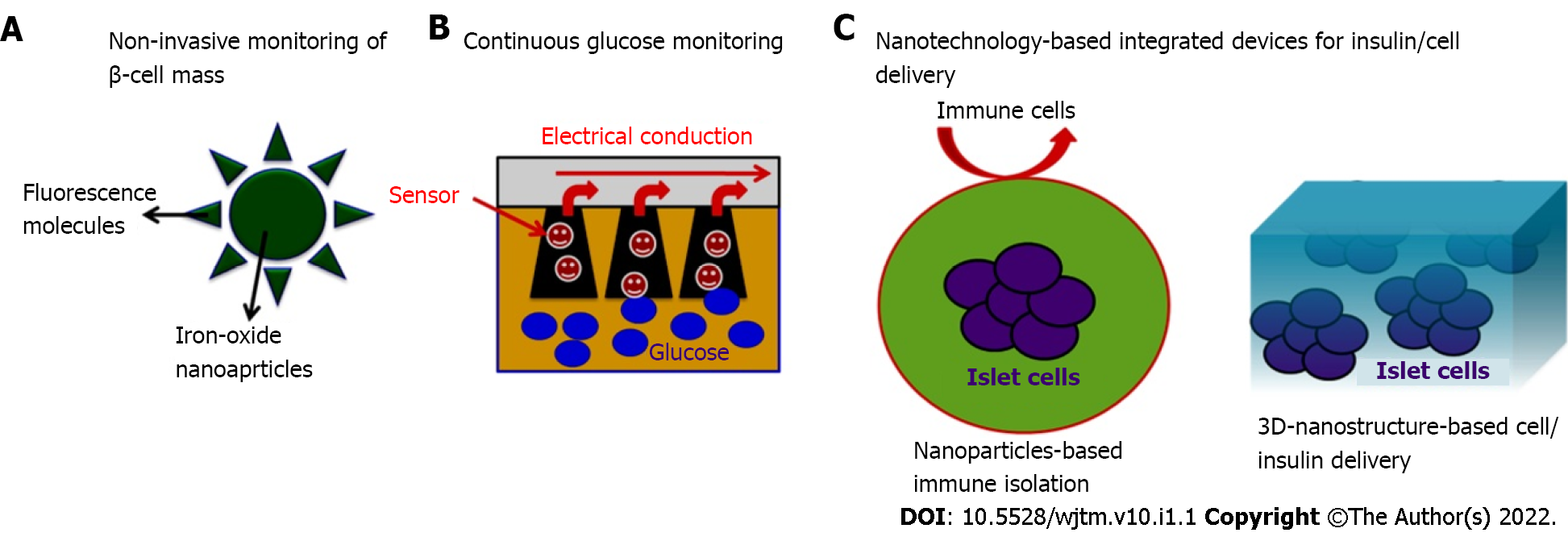Copyright
©The Author(s) 2022.
World J Transl Med. Jun 26, 2022; 10(1): 1-13
Published online Jun 26, 2022. doi: 10.5528/wjtm.v10.i1.1
Published online Jun 26, 2022. doi: 10.5528/wjtm.v10.i1.1
Figure 1 Schematic representation showing activation of pancreatic transcription factors in human hepatic progenitor cells under hyperglycemic conditions to generate insulin producing cells similar to de novo pathway.
InPCs: Insulin producing cells.
Figure 2 Representation of encapsulation technology for glycemic control in diabetes.
A: Schematic representation showing the applicability of microencapsulation of intermediate, progenitor cells derived from human hepatic progenitor cells under hyperglycemic microenvironment post intraperitoenal transplantation into diabetic mice. The strategy demonstrated the long-term maintenance of blood glucose homeostasis in diabetic mice; B: The microencapsulation strategy overcomes on immunological barriers and allows efficient supply of oxygen and nutrients to encapsulated cells in 3D-environment which can control the hyperglycemia in human from ectopic site. InPCs: Insulin producing cells; HPC: Hepatic progenitor cells.
Figure 3 Nanotechnology-based emerging strategies to address the challenges in diagnosis and management of diabetes.
A: Iron-oxide nanoparticles-based approach (such as enhanced contrast imaging) for non-invasive monitoring of progressive β-cell loss which could be used to address the patient needs at the various stages of disease progression; B: Nanoparticle-based glucose sensors can assist improved accuracy and patient comfort for regular monitoring of blood glucose levels; C: Nanotechnology-based devices may provide immunological protection of transplanted pancreatic cells which could help to maintain normoglycaemic conditions in patients with diabetes.
- Citation: Habeeb MA, Vishwakarma SK, Habeeb S, Khan AA. Current progress and emerging technologies for generating extrapancreatic functional insulin-producing cells. World J Transl Med 2022; 10(1): 1-13
- URL: https://www.wjgnet.com/2220-6132/full/v10/i1/1.htm
- DOI: https://dx.doi.org/10.5528/wjtm.v10.i1.1















